AboutSeychelles

The Seychelles is an archipelago of 115 islands in the Indian Ocean, off East Africa. It’s home to numerous beaches, coral reefs and nature reserves, as well as rare animals such as giant Aldabra tortoises. Mahé, a hub for visiting the other islands, is home to capital Victoria. It also has the mountain rainforests of Morne Seychellois National Park and beaches, including Beau Vallon and Anse Takamaka.

General Information about Seychelles

The Seychelles National flag is made of five oblique bands of blue, yellow, red, white and green representing a young country moving in the new future.
The colour blue depicts the sky and the sea while yellow is for the sun which gives light and life. Red symbolizes the people and its determination to work for the future in unity and love, whilst the white band represents social justice and harmony. The green depicts the land and the natural environment.
“Koste Seselwa” is the name given of the national anthem.
Sesel ou menm nou sel patri
Kot nou viv dan larmoni
Lazwa, lanmour ek lape
Nou remersye Bon Dye
Prezerv labote nou pei
Larises nou losean
En leritaz byen presye
Pou boner nou zanfan
Reste touzour dan linite
Fer monte nou paviyon
Ansanm pou tou leternite
KOSTE SESELWA!
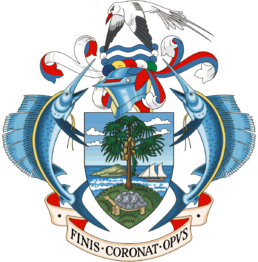
The coat of arms of the Republic of Seychelles shows a shield, in which a turtle is located on green grounds. On the ground there is a coconut tree. Behind it there is a blue sea with two islands and a boat to be seen. The shield is enthroned by a silver helmet, on which a tropical bird is located before blue and white waves.
The shield is supported by two white swordfish. Beneath the shield the motto of Seychelles is stated: “Finis Coronat Opus” (Latin for “The End Crowns the Work”).

The Seychelles’ 115 granite and coral islands extend from between 4 and 10 degrees south of the equator and lie between 480km and 1,600km from the east coast of Africa in the western Indian Ocean.
This Indian Ocean republic occupies a land area of 455 km² and an Exclusive Economic Zone of 1.4 million km². It represents an archipelago of timeless beauty, tranquillity and harmony that is famous for its world-beating beaches and for its great diversity which rolls from lush forests down to the warm azure ocean.
Of these 115 islands, 41 The Inner Islands constitute the oldest mid-oceanic granite islands on earth while a further 74 form the 5 groups of low-lying coral atolls and reef islets that are the Outer Islands.
Seychelles is home to no less than two UNESCO World Heritage Sites: the legendary Vallée de Mai on Praslin where the wondrously shaped Coco-de-mer nut grows high on ancient palms and the fabled Aldabra, the world’s largest raised coral atoll, first seen by early Arab seafarers of the 9th century A.D.
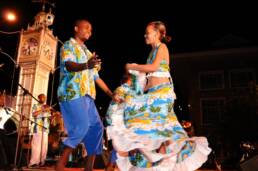
81,188 inhabitants (2005)
Ethnic Groups
Seychellois – 89.1%
Indian – 4.7%
English – 1.6%
Chinese – 1.5%.
Seychelles Creole (based on French), other languages – English and French.
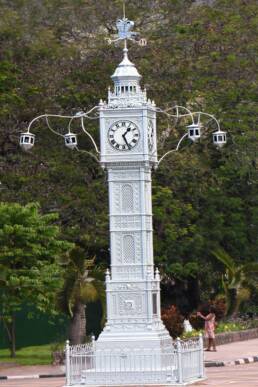
The Capital of Seychelles is Victoria and currently holds 25,000 inhabitants.
Seychelles rupee (SCR) = 100 cents
1 euro = 5,95 (Approximately)
1 US$ = 5,46(Approximately)

The Seychelles’ climate is one which is always warm and does not reach extremes of heat or cold. The temperature rarely drops below 24°C or rises above 32°C. All but the remotest southern islands lie outside the cyclone belt making Seychelles’ a year round destination for sun worshippers and beach lovers.
It is generally cooler when the north-west trade winds blow during the months of November to March. The sea is generally calm and the weather warm and humid, with average winds of 15 – 22 kilometres per hour.
A larger amount of the annual rainfall falls during the months of December to February compared to other months. The average number of rainy (days with 1 millimetre or more rainfall) in December, January and February are 18, 17 and 11 days respectively. It is also fairly cloudy at times during those months and therefore less sunshine. The weather is hottest from December to April, and the humidity is high – often 80% or higher.
The months of May to October bring drier, cooler weather, and livelier seas – particularly on south-eastern coasts – and winds of 19 -37 kilometres per hour are common.
On average the number of rainy days during this period is 11 with long periods of sunshine.
Dry spells of two weeks or more are fairly common.

Seychelles’ 115 islands fall under two distinct groups. The tall granite, Inner Islands cluster mainly within the relatively shallow Seychelles’ plateau, 4° south of the equator and roughly 1800 km. distant from the east coast of Africa while the low-lying coralline cays, atolls and reef islands of the Outer Islands lie mainly beyond the plateau up to 10° south of the equator.
These Outer Islands are divided into five groups: the Amirantes group lying 230km distant from Mahé, the Southern Coral Group, Alphonse Group, Farquhar Group and finally the Aldabra Group, some 1150km from Mahé.
There are 43 Inner Islands in all — 41 granitic and 2 coralline and a total of 72 coralline Outer Islands.

Seychelles is a comparatively young nation which can trace its first settlement back to 1770 when the islands were first settled by the French, leading a small party of whites, Indians and Africans. The islands remained in French hands until the defeat of Napoleon at Waterloo, evolving from humble beginnings to attain a population of 3,500 by the time Seychelles was ceded to Britain under the treaty of Paris in 1814.
During this period Seychelles came to know the enlightened policies of administrators such as Pierre Poivre, the brilliant politicking of Governor Queau de Quinssy and, of course, the terrible repercussions of the French Revolution.
Under the British, Seychelles achieved a population of some 7,000 by the year 1825. Important estates were established during this time producing coconut, food crops, cotton and sugar cane. During this period Seychelles also saw the establishment of Victoria as her capital, the exile of numerous and colourful troublemakers from the Empire, the devastation caused by the famous Avalanche of 1862 and the economic repercussions of the abolition of slavery.
Seychelles achieved independence from Britain in 1976 and became a republic within the commonwealth. Following a period of single party rule by the government of Mr. France Albert René, on December 4, 1991, President René announced a return to the multiparty system of government, 1993 saw the first multiparty presidential and legislative elections held under a new constitution in which President René was victorious. President René also won the 1998 and 2003 elections before transferring the Presidency to James Alix Michel in June 2004.
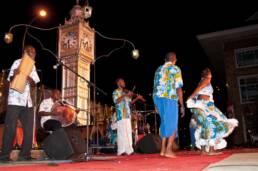
The Vibrant Culture of Seychelles

In the evolution of its society, Seychelles has remained faithful to its multi-ethnic roots. For over two centuries, the islands have remained a melting pot of different races, traditions and religions from the four corners of the earth.
Inspired by its grand diversity of cultural influences, ethnic diversity with racial harmony remain the mainstays of today’s vibrant yet tranquil Creole nation for which harmony is a way of life.
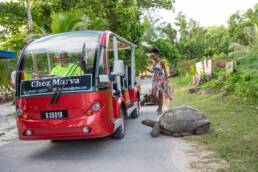
Today, the approximately 90,000 strong Seychellois population continues to reflect its multi-ethnic roots. Traditionally, the islands have attracted a broad diversity of peoples from the four corners of the earth that has included freed slaves, European settlers, political exiles, adventurers, traders of Arab and Persian origin as well as Chinese and Indians.
Practically every nation on earth has been represented in this melting pot of cultures, each one contributing its special influence to today’s vibrant yet tranquil society.
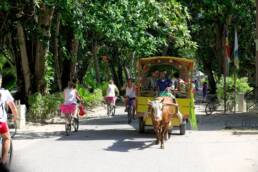
The cosmopolitan Seychellois are a colourful blend of peoples of different races, cultures and religions. At different times in its history, people of African, European and Asian origin have come to Seychelles, bringing with them their distinct traditions and customs and contributing to the way of life and to the vibrant Seychellois culture.
One can see these influences at work throughout the domains of local art, cuisine, music, dance and architecture.
The architectural design of some of the grand old houses with their steep roofs are representative of a style adapted for comfortable living in the tropics that displays influences from Seychelles’ French and British colonial heritage. Modern architecture attempts to assimilate traditional styles with practical features designed to capture the island breezes.
Local artists continue to exhibit diverse styles that echo the multi-ethnic backdrop of the islands and bear testament to the various influences which have come to bear. Creole music and dance have their roots in African, Malagasy and European cultures with rhythms traditionally accompanied by simple drums and string instruments which, today, include such recent imports as the violin and guitar.
The traditional moutya is an erotic dance derived from the days of slavery and still features today, together with the sega with its colourful lyrics; the kanmtole, reminiscent of a country reel, and the Kontredanse, an import
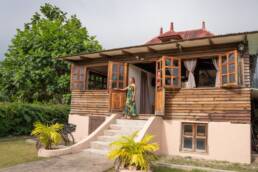
Seychelles’ architecture is at once distinctive in its style and practical in its design. It clearly illustrates the influences of its colonial past and combines these with practical considerations such as steep roofs to shoot the rain, wide verandas to make the most of a climate that encourages outdoor living as well as features to make the most of the island breezes.
Traditionally, Seychellois houses featured an outside kitchen so that the racy aromas of the cuisine did not invade the living space.
Seychelles’ colonial past is seen in the competition between wealthy land and plantation owners to create the most opulent approach to their dwelling, often culminating in stately stairs on four sides.
Originally, many houses would have been roofed with thatch from the coconut plantations but, for practical and novelty reasons, these gave way to corrugated iron sheeting when that became available.
Many of the nation’s smaller houses imitate to a greater or lesser extent these design features with early wooden panelling increasingly giving way to concrete.
For such a small country, Seychelles has a vibrant art scene that encompasses painters, sculptors, writers and poets, artisans of many types, musicians and dancers.
Painters have traditionally taken inspiration from the richness of Seychelles’ natural beauty to produce a wide range of works using mediums ranging from water-colours to oils, acrylics, collages, metals, aluminium, wood, fabrics, gouache, varnishes, recycled materials, pastels, charcoal, embossing, etching, and giclee prints. Local sculptors produce fine works in wood, stone, bronze and cartonnage.
Local writers and poets have also used the magnificent backdrop of Seychelles as the inspiration for historical accounts, fascinating works documenting the social history of the islands and its people and collections of short stories and poems that evoke the passions of island living.
Throughout Seychelles, there are many artisans producing works of art that are as varied and diverse as their surrounds and which include stained glass, products made from coconut shell, husk, seashells and corals, clothing, gold, silver and other forms of jewellery, recycled materials, fibres, bamboo, metal and pottery.
Music and dance have always played a prominent role in Seychelles culture and in all types of local festivities. Rooted in African, Malagasy and European cultures, music is played to the accompaniment of drums such as the Tambour and Tam-Tam and simple string instruments. The violin and guitar are relatively recent foreign imports which play a prominent role in today’s music.
The lively Sega dance with its elegant hip-swaying and shuffling of the feet is still popular as is the traditional Moutya, a mysterious, erotic dance dating back to the days of slavery when it was often used as an outlet for strong emotions and as a way of expressing discontent.
Kanmtole is a foreign dance import, accompanied by banjos, accordion, violin and triangle and reminiscent of a Scottish reel while the Kontredanse with its intricate movements has its origins in the French court and is danced to the strains of banjo, triangle and to the instructions of the ‘Komandan’ or Commander who calls the sets.
Several groups of traditional dancers perform at local functions as do modern groups playing jazz, reggae, country & western, hip-hop, ballads and classic rock. Several choirs exist singing traditional hymns and promoting choral music with a repertoire that includes sacred, secular, gospel and folk pieces.

Echoing the grand assortment of people who populate Seychelles, Creole cuisine features the subtleties and nuances of French cooking, the exoticism of Indian dishes and the piquant flavours of the Orient.
Grilled fish or octopus coated with a sauce of crushed chillies, ginger and garlic are national favourites as are a variety of delicious curries lovingly prepared with coconut milk and innovative chatinis made from local fruits such as papapya and golden apple.
As may be expected, seafood dishes feature predominantly in the local cuisine, appearing alongside the national staple, rice.
Some restaurants specialise in Indian, Chinese or Italian food and many feature popular international and specialist dishes.

Before finding a mouthpiece in television, radio broadcasts and through the written word, folklore in Seychelles relied much on oral tradition for its dissemination.
Over the years it has traditionally revolved around certain familiar characters such as ‘Soungula’, renowned for his cleverness and resourcefulness in solving life’s problems, as well as other colourful personalities such as Frer Zako, Kader, Tizan and Kousoupa.
Certain popular fables and stories still do the rounds, dating back to those days before television when there was little in the way of popular entertainment and these remain mediums for providing an audience with insights as to the correct way to live, island-style.

Seychelles is a living museum of natural history and a sanctuary for some of the rarest species of flora & fauna on earth. With almost 50% of its limited landmass set aside as national parks and reserves, Seychelles prides itself on its record for far sighted conservation policies that have resulted in an enviable degree of protection for the environment and the varied ecosystems it supports.
Nowhere else on earth will you find unique endemic specimens such as the fabulous Coco-de-mer, the largest seed in the world, the jellyfish tree, with only eight surviving examples, the Seychelles’ paradise flycatcher and Seychelles warbler.
Seychelles is also home to two U.N.E.S.C.O World Heritage Sites: Aldabra, the world’s largest raised coral atoll and Praslin’sVallée de Mai, once believed to be the original site of the Garden of Eden.
From the smallest frog to the heaviest land tortoise and the only flightless bird of the Indian Ocean, Seychelles nurtures an amazing array of endemic species within surrounds of exceptional natural beauty.
